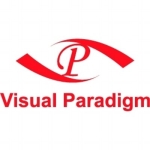I use it for high-level detailed and high-level conceptual drawings for leadership. I also use it for small drawings when I'm doing documentation, policy creation, or building some kind of a spec.
It is installed on my personal machine. In terms of the version, my Office suite is 19, so I assume the Visio version is whatever is packaged with Office 19 suite.
It improved the way our organization functioned years ago, but right now, people are trying to find other ways to do what they're doing in Visio because the tool is stagnant and really not moving. It hasn't for years. They've added features but really not much. They're more pulling those into higher-level tools such as Azure Development Studio and things like that.
What I like about it is that the templates are easily findable and usable, and they are usually created for other software packages. It seems to be pretty much widely adopted in the industry.
It is a visualization tool, so database visualization is pretty static in it. They haven't moved the ERDs very well. They haven't adopted any real visualization like what you have in Hackolade for JSON or other data patterns. It has none of that. If you go onto broader patterns, you can actually label and integrate with a data set, if you want, for Visio, but it's very clunky and very difficult for me to assign that to another user. I can't assign it to a junior or a documenter. They really haven't cleaned up and made their tools simpler to use when linking to data, which is primarily what you're trying to do.
The versioning has always been a bit messy. You can't have a state of how it is to how it was without having two drawings. You can layer, but layers don't work very well for the most part. They just haven't progressed the tool. The tool isn't keeping up with the architecture that people are forced to do. So, more and more people around here are abandoning it and moving to alternate tools. It is now being used for just basic drawings. It is no longer an enterprise-quality development or documentation tool. It can be, but you'd have to work pretty hard at it.
It doesn't have autosave features with respect to the way some of the other Office tools have it. It is pretty clunky if your machine crashes or gets shut down because of a low battery or something like that. To make sure that the changes persist, you need to look at the last version of it. It has still got on-premise features, and it still has that same paradigm of clicking "save", and you better keep clicking "save" to make sure it doesn't get corrupted. It is very old school for cloud tools. Any Office tool, Google tool, or Apple tool is going to save all your work because it's basically updating via messages, but that's not how Visio works. It is very old school. They just aren't spending any money on it.
I'd love them to get back to being able to do true data flow diagrams that are easy to use and that actually can be pulled from data lineage. In lineage diagrams, you can pull the data and actually reflect them in the right drawing. There is a little bit of that going on in some of the drawings but not much. I want to be able to do database design documents, if necessary. I've got people doing those. I'd like to do network drawings with multiple layers in a simpler way and to the point where the layers have displays of viewpoints as most systems do.
I have been using this solution for 10 to 15 years.
It is very stable, but there are no autosave features in it.
There is no scalability to it. It is on your machine. You could put files into Teams and somewhat scale through Teams, but it is not scalable. You don't have the ability to have team cooperation and repositories. You can do repositories, but it doesn't have any of the features that allow you to regulate and have all the things you'd have or expect in any enterprise quality development tool or design tool. It doesn't have any of those features. You have to broaden the suite and buy about nine other Microsoft things to somehow attempt to get those features.
Its usage is declining. We used to have about 150 users. Now, we probably only have about 50 or 60 users. We're buying tools that knock out some of the edges of what Visio would do. Enterprise architecture is really no longer done in Visio. It is done a little bit, but for the most part, we use other tools for it. Although it can make the boxes, it can't really work a process in enterprise architecture. It is not a development or life cycle management tool.
I've never been able to queue up technical support on it. We don't allow our internal people to directly communicate with technical support. It goes through an internal layer.
It is easy to set up. It is also easy to add libraries to it.
I know you can pick it up in retail for under a thousand per person. You can also pick it up for cheaper than that. Microsoft has about 7,000 licensing models, and you get certain percentages off specific licensing. If you're a partner, you get specific numbers of licenses with the partnership price.
Visio was owned not by Microsoft. It was its own company way back, and it was actually moving very well. It had ERDs and was actually developing very well. Microsoft bought it. They picked it apart and started moving those tools into other things and downgraded the tool. I don't think it has met the level of expertise and the level of technical proficiency that it had 15 years ago. It was downgraded, pure and simple. A lot of those pieces are used in other things now.
I would advise others that just don't try to make it more than what it is. Find a tool that is enterprise-worthy if you're trying to move to that level, but don't try to make it into an enterprise tool.
I would rate it a six out of 10.





















